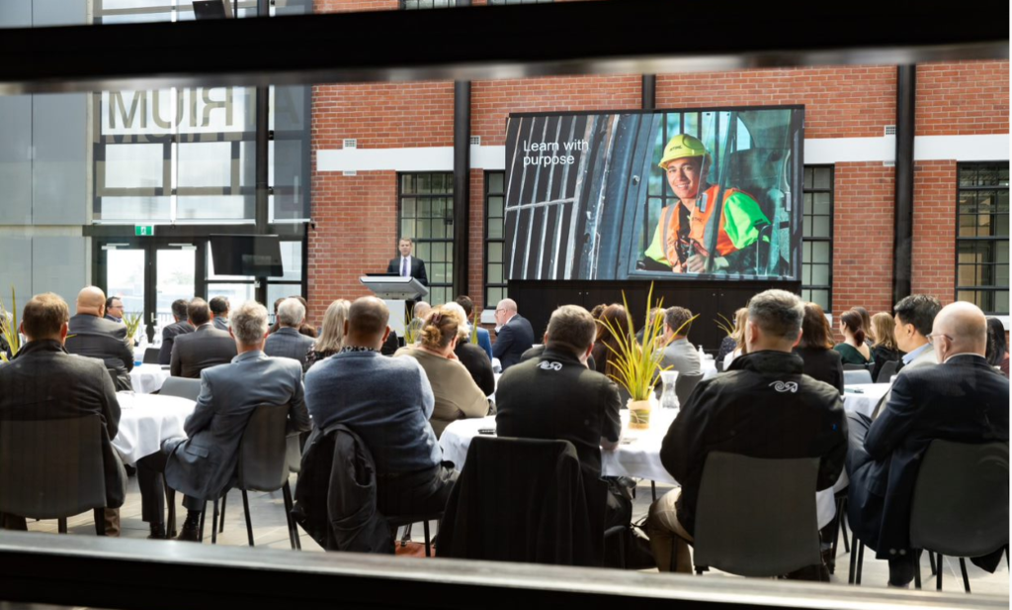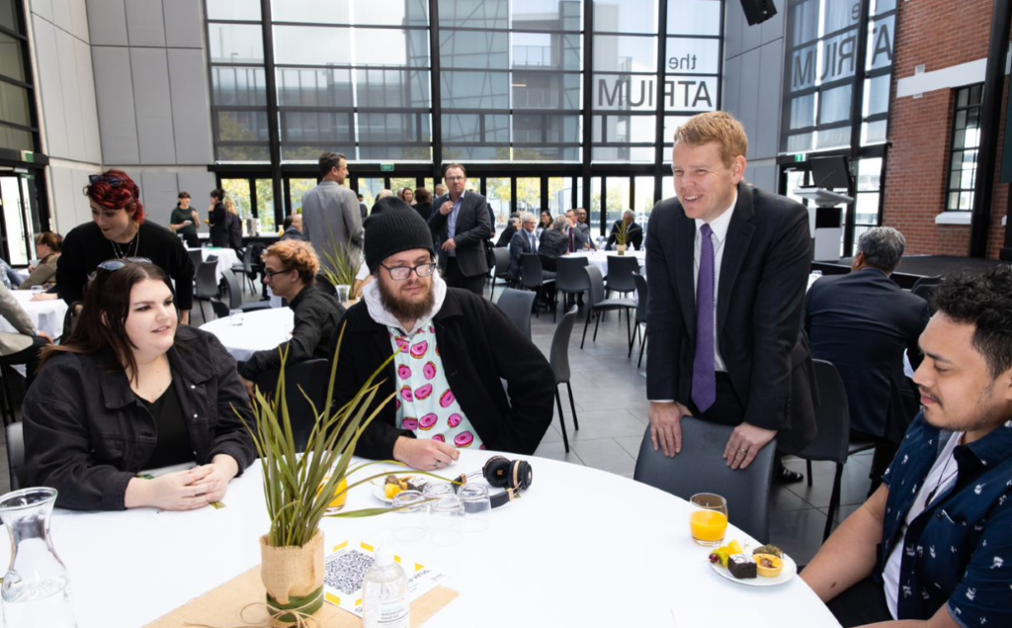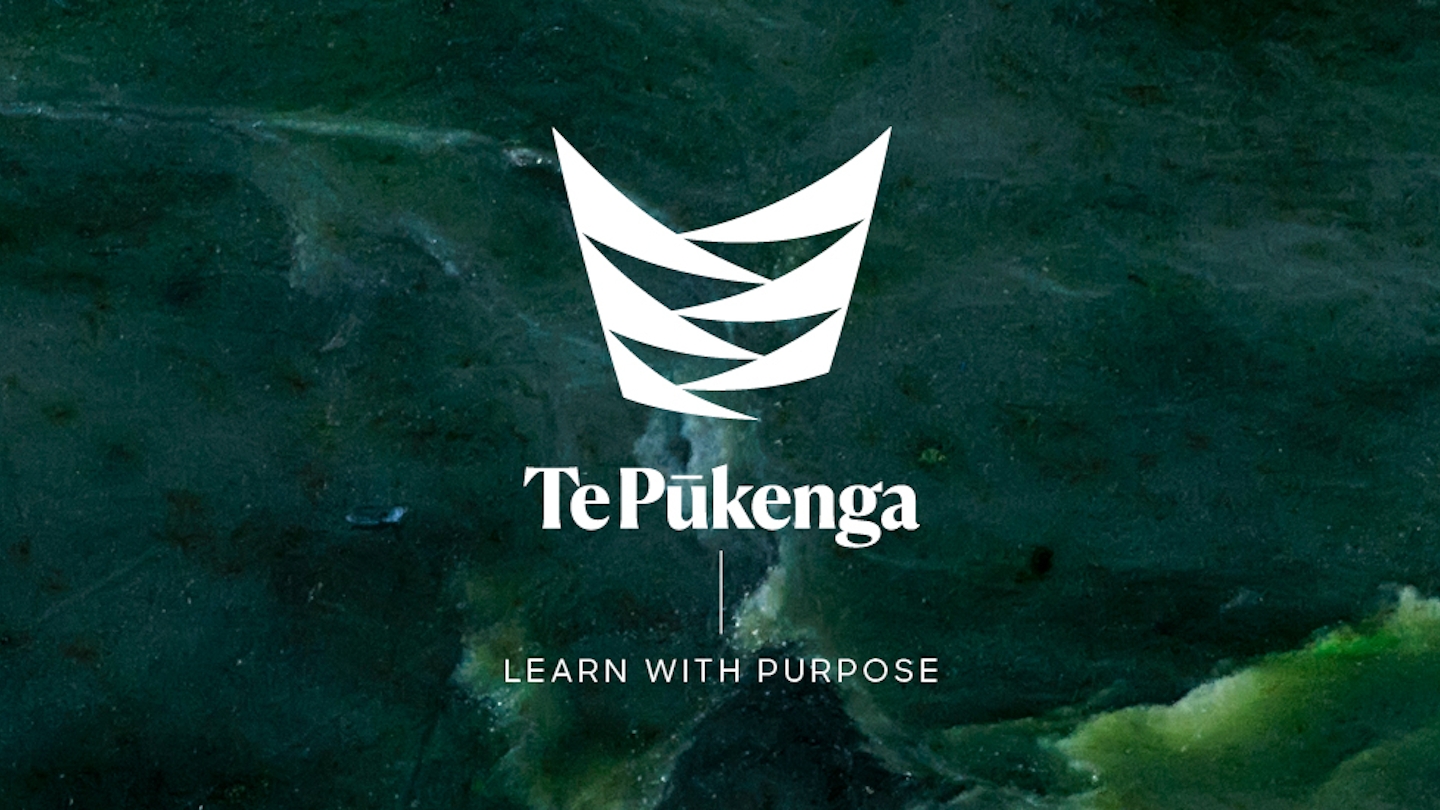Kia ora
Ngā mihi o te ahiahi
Our new name
We have held off sending this newsletter, which is already full of lots of information, so we could share our most recent news with you. Te Pūkenga! On Tuesday 29 September, the Minister of Education, Hon Chris Hipkins, announced our new name. We are delighted to now be known as Te Pūkenga. This name replaces our previous working name. Alongside our new name is also a new visual identity and logo.

Our new name was announced by Education Minister Chris Hipkins in Hamilton
To me, our new name signifies a range of things. Firstly, giving something a name makes it real and breathes life into it. Te Pūkenga has a very exciting transformational mandate to achieve, and having a permanent name feels to me like we have even more license to make swift progress.
A new and shared name will help unify us as a single national provider of vocational education and training. It was great to have so many staff and learners from around our broader network right across Aotearoa share in watching the name announcement on Tuesday too.

Minister Hipkins talking with learners at the name announcement event
Importantly, confirming a name of such significance to something new, of our size and scale, has allowed our Council to carefully consider where they want our focus and arc of influence to be best applied. Te Pūkenga will come to represent a reimagined national institute with regional reach that has Ākonga at its very centre and has an unrelenting focus on achieving equity for Māori.

Our new identity is inspired by the base of the harakeke, the strongest part from where all the threads meet and grow. While the Te Pūkenga network is made of many separate strands, we are far stronger together. We will draw on this strength and use it to support and lift each other up. This is the base from which we will grow and flourish.
Collaborating and co-designing for success
Te Pūkenga is Aotearoa’s biggest tertiary education provider, and we will be the 35th largest tertiary institution on the planet, with around 240,000 learners and students, and we will be made up of between 10-11,000 staff.
Taking the time to talk with and listen to staff, learners, our partners and stakeholders is critical to our success, and there is a wide array of collaborating going on right now.
Our Council Chair Murray Strong and I have now started our national roadshow, postposed a few times due to Covid-19 restrictions. While Murray has visited all our subsidiaries a number of times in the past, I haven’t yet had that opportunity. Getting the chance to visit each campus and meet staff and learners has been a fantastic experience for me so far. While each region has a different ‘look and feel’, the single unifying thread I have noticed is passionate staff who care deeply about their learners, and learners who are engaging, articulate and committed to setting themselves up for careers that involve lifelong learning.
Our Ākonga at the Centre team, running one of Te Pūkenga’s transformation programme workstreams, have also initiated a national roadshow of sorts – the team will be visiting each region to talk with staff, learners, whānau and the community of both subsidiaries and transitional ITOs over the next couple of months.
They are undertaking a significant research project that will look at the barriers and success enablers learners might face. The team, who have ethics approval to conduct their research, will develop learner journey maps and collect and collate data and information that will be used to inform our operating model – Te Pūkenga’s blueprint for transformation.
The team has had great support and collaboration from the learner centred design network forum, a team of 38 staff representatives from subsidiaries and transitional ITOs who have been essential to planning this national engagement programme.
Ākonga at the Centre will ensure the unique needs of ākonga, including those learners currently identified as underserved, will be met by Te Pūkenga. The design process will be collaborative, with learners and other key partners and stakeholders playing a significant role in co-design. Engagement will occur online, it will be face-to-face in social and shared spaces, and there will be targeted focus groups too.
I hope you enjoy reading more about the progress Te Pūkenga is making – not only what we are doing, but importantly, the way we intend to do it too.
Ngā mihi
Stephen Town
Chief Executive


